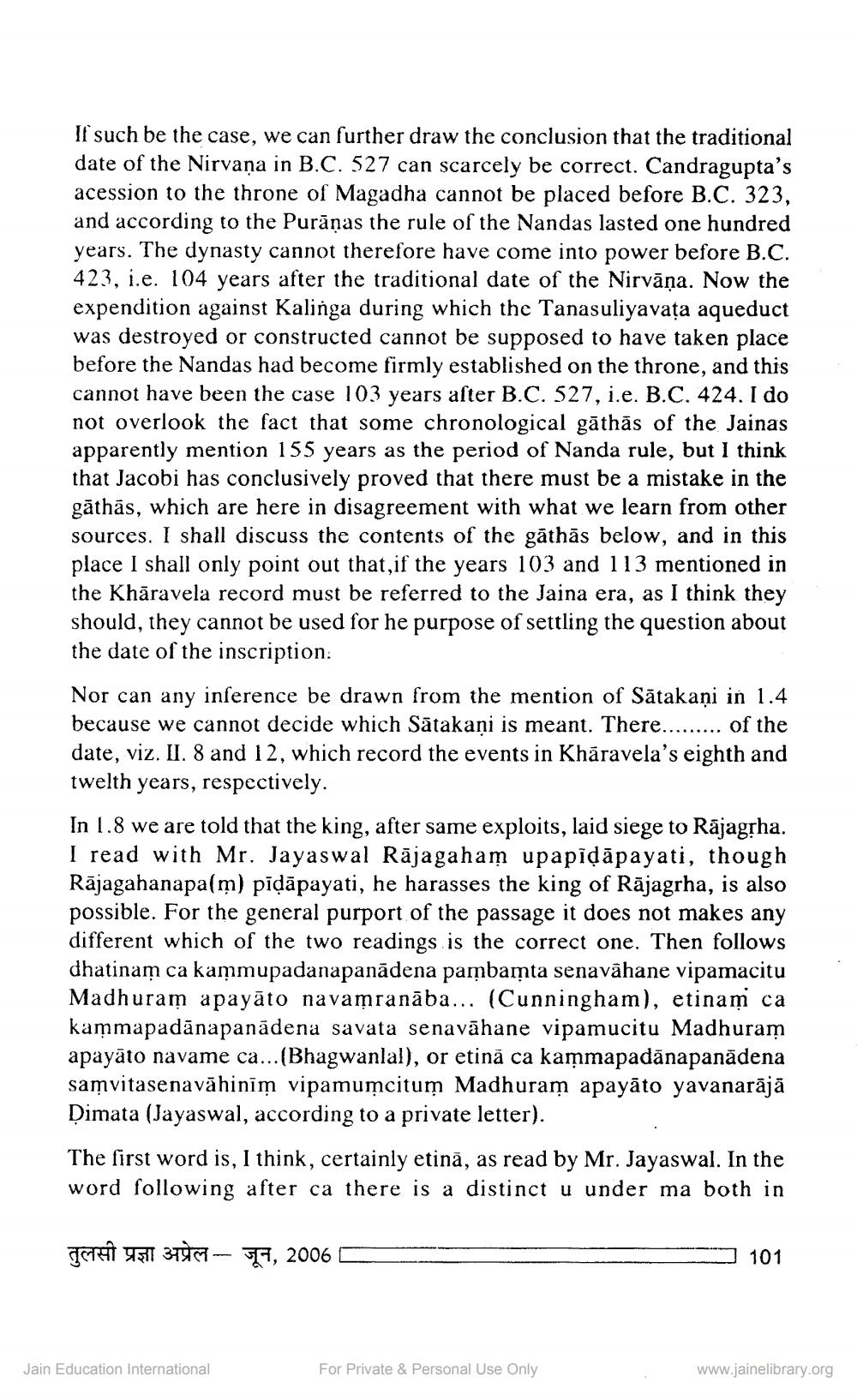________________
If such be the case, we can further draw the conclusion that the traditional date of the Nirvana in B.C. 527 can scarcely be correct. Candragupta's acession to the throne of Magadha cannot be placed before B.C. 323, and according to the Purāṇas the rule of the Nandas lasted one hundred years. The dynasty cannot therefore have come into power before B.C. 423, i.e. 104 years after the traditional date of the Nirvana. Now the expendition against Kalinga during which the Tanasuliyavața aqueduct was destroyed or constructed cannot be supposed to have taken place before the Nandas had become firmly established on the throne, and this cannot have been the case 103 years after B.C. 527, i.e. B.C. 424. I do not overlook the fact that some chronological gathas of the Jainas apparently mention 155 years as the period of Nanda rule, but I think that Jacobi has conclusively proved that there must be a mistake in the gāthās, which are here in disagreement with what we learn from other sources. I shall discuss the contents of the gāthās below, and in this place I shall only point out that,if the years 103 and 113 mentioned in the Khāravela record must be referred to the Jaina era, as I think they should, they cannot be used for he purpose of settling the question about the date of the inscription:
Nor can any inference be drawn from the mention of Satakani in 1.4 because we cannot decide which Sātakaṇi is meant. There......... of the date, viz. II. 8 and 12, which record the events in Kharavela's eighth and twelth years, respectively.
In 1.8 we are told that the king, after same exploits, laid siege to Rājagṛha. I read with Mr. Jayaswal Rajagaham upapīḍāpayati, though Rājagahanapa(m) pīḍāpayati, he harasses the king of Rajagrha, is also possible. For the general purport of the passage it does not makes any different which of the two readings is the correct one. Then follows dhatinam ca kammupadanapanādena pambamta senavāhane vipamacitu Madhuram apayāto navamranāba... (Cunningham), etinam ca kammapadānapanãdena savata senavāhane vipamucitu Madhuram apayāto navame ca.....(Bhagwanlal), or etină ca kammapadānapanãdena samvitasenavāhinīm vipamumcitum Madhuram apayāto yavanarājā Dimata (Jayaswal, according to a private letter).
The first word is, I think, certainly etină, as read by Mr. Jayaswal. In the word following after ca there is a distinct u under ma both in
तुलसी प्रज्ञा अप्रेल - जून, 2006
Jain Education International
For Private & Personal Use Only
101
www.jainelibrary.org




